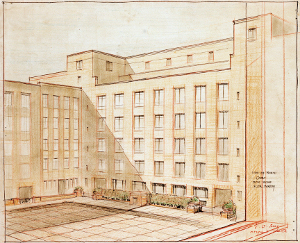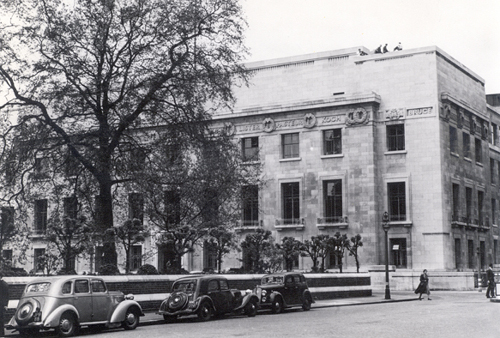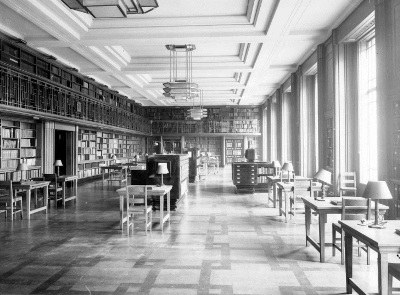On 8th June 2016 I attended the first Country Manager’s meeting of the newly formed Foundation of the Archives Portal Europe (APEF) at the National Archives of the Netherlands (Nationaal Archief).
The Foundation has been formed on the basis of partnerships between European countries. The current Foundation partners are: Belgium, Denmark, Luxembourg, The Netherlands, Spain, Sweden, Switzerland, Estonia, France, Germany, Hungary, Italy, Latvia, Norway and Slovenia. All of these countries are members of the ‘Assembly of Associates’. Negotiations are proceeding with Bulgaria, Greece, Liechtenstein, Lithuania, Malta, Poland, Slovakia and the UK. Some countries are not yet in a position to become members, mainly due to financial and administrative issues, but the prospects currently look very positive, with a great willingness to take the Portal forwards and continue the valuable networking that has been built up over the past decade. Contributing to the Portal does not incur financial contribution; the Assembly of Associates is separate from this, and the idea is that countries (National Archives or bodies with an educational/research remit) sign up to the principles of APE and the APE Foundation – to collaborate and share experiences and ideas, and to make European archives as accessible as possible.
The Governing Board of the Foundation is working with potential partners to reach agreements on a combination of financial and in-kind contributions. It’s also working on long term strategy documents. It has established working groups for Standards and PR & Communications and it has set up cooperation with the Dutch DTR project (Digitale Taken Rijksarchieven / Digital Processes in State Archives) and with Europeana. The cooperation with the DTR project has been a major boost, as both projects are working towards similar goals, and therefore work effort can be shared, particularly development work.
Current tasks for the APEF:
- Building an API to open up the functionality of the Archives Portal Europe to third parties and to implement the possibility for the content providers to switch this option on or off in the Archives Portal Europe’s back-end.
- Improving the uploading and processing of EAC-CPF records in the Archives Portal Europe and improving the way in which records creators’ information can be searched and found via the Archives Portal Europe’s front-end and via the API.
- Enabling the uploading/processing of “additional finding aids (indexes)” in the Archives Portal Europe and making this additional information available via the Archives Portal Europe’s front-end and the API.
The above in addition to the continuing work of getting more data into the Portal, supporting the country managers in working with repositories, and promoting the portal to researchers interested in using European-wide search and discovery tool.
APEF will be a full partner in the Europeana DSI2 project, connecting the online collections of Europe’s cultural heritage institutions, which will start after the summer and will run for 16 months. Within this project APEF will focus on helping Europeana to develop the aggregation structure and provide quality data from the archives community to Europeana. A focus on quality will help to get archival data into Europeana in a way that works for all parties. There seems to be a focus from Europeana on the ‘treasures’ from the archives, and on images that ‘sell’ the archives more effectively. Whatever the rights and wrongs of this, it seems important to continue to work to expose archives through as many channels as we can, and for us in the UK, the advantages of contributing to the Archives Hub and thence seamlessly to APE and to Europeana, albeit selectively, are clear.
A substantial part of the meeting was dedicated to updates from countries, which gave us all a chance to find out what others are doing, from the building of a national archives portal in Slovakia to progress with OAI-PMH harvesting from various systems, such as ScopeArchiv, used in Switzerland and other countries. Many countries are also concerned with translations of various documents, such as the Content Provider Agreement, which is not something the UK has had to consider (although a Welsh translation would be a possibility).
We had a session looking at some of the more operational and functional tasks that need to be thought about in any complex system such as the APE system. We then had a general Q&A session. It was acknowledged that creating EAD from scratch is a barrier to contributing for many repositories. For the UK this is not really an issue, because we contribute Archives Hub descriptions. But of course it is an issue for the Hub: to find ways to help our contributors provide descriptions, especially if they are using a proprietary system. Our EAD Editor accounts for a large percentage of our data, and that creates the EAD without the requirement of understanding more than a few formatting tags.
The Archives Hub aims to set up harvesting of our contributors’ descriptions over the next year, thus ensuring that any descriptions contributed to us will automatically be uploaded to the Archives Portal Europe. (We currently have to upload on a per-contributor basis, which is not very efficient with over 300 contributors). We will soon be turning our attention to the selective digital content that can be provided by APE to Europeana. That will require an agreement from each institution in terms of the Europeana open data licence. As the Hub operates on the principles of open data, to encourage maximum exposure of our descriptions and promote UK archives, that should not be a problem.
With thanks to Wim van Dongen, APEF country manager coordinator / technical coordinator, who provided the minutes of the Country Managers’ meeting, which are partially reproduced here.





